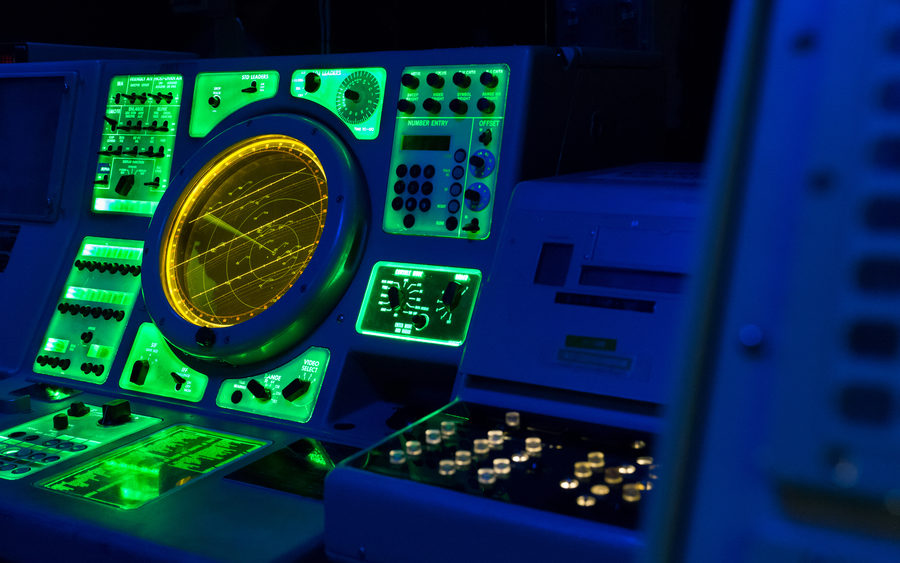
Writing for Defence Online, David Eldridge, Sales Director at Chess Dynamics looks at the critical demands of a naval surveillance capability.
The surveillance capability of a naval vessel is the ship’s eyes, used to detect potential threats before they’re too close, and is vital to its operation and survivability. The nature of maritime operations, whether military or civil, places a high demand on persistent surveillance, aided by high-definition imaging and smart technologies which reduce the burden on the operator.
Here, we’ll explain the key factors to consider when selecting a naval surveillance solution and how a capability should be tailored to meet the specific demands of its intended application.
Properties to consider
Image accuracy, resolution and stability are the fundamentals of surveillance capability, enabling both detection and classification of objects of interest. These three key pillars ensure that potential threats can be identified, and accurate information shared throughout the command chain.
Vital to any surveillance capability is its ability to perform 24 hours a day, seven days a week and deliver persistent surveillance at maximum resolution. Through technological innovations and developments of new sensors, persistent surveillance can provide long range reconnaissance for the detection and identification of potential threats for the military, civil organisations and high value assets. A 24-hour operation, regardless of operating conditions, is crucial in a dynamic environment where many objects need to be identified and classified.
The broader integration of the surveillance capability into the ship’s bridge is also essential, as it enables surveillance-generated information to be considered alongside other sources such as radar, AIS and GPS. By integrating surveillance capability with the vessel’s additional sensors, cameras can be operated and moved into position based on objects or areas of interest. This brings together different information sources and therefore reduces the number of different screens or alerts that the operator needs to be cognisant of.
Surveillance, though, is a broad term, encompassing a combination of capabilities that go beyond reconnaissance. The addition of emerging technologies such as autonomous systems, artificial intelligence (AI) assistance, navigation and collision avoidance can enhance overall capability. In turn, this enables greater and more informed decision making which ultimately increases operational advantage.
Through technologies such as automatic video classification, the operator can be conducting navigational tasks and absorbing incoming information while the software automatically detects, recognises and identifies objects of interest. Connecting into AIS maritime databases, this can check the surveillance-obtained visual of the object against its classification to determine if the object is what it purports to be.
This greatly reduces the cognitive burden on the operator as the system effectively filters the information and only flags objects that are deemed risks or threats, or are unknown. These AI-based solutions also help improve the level of safety on the vessel, as they can auto-detect a target at a much greater range than through manual and human-centric processes.
In addition to direct operational performance, the lifetime of a capability in relation to its platform also needs to be considered, as threats will change and evolve – requiring operators to be in possession of greater information. Systems must therefore be straightforward to maintain and allow for integration of new technology – sensors or hardware – to enhance capability. This not only enables systems to be upgraded to counter new threats but also helps reduce its ongoing operational cost.
Tailoring a capability for its application
Operational environments and surveillance objectives are incredibly diverse in the maritime domain, and capability must be flexible to meet the specific task at hand.
For example, maintenance support and training must be considered on a case-by-case basis. If repairs at sea are likely, it’s important that a solution is modular and designed for availability – its components should be easily accessible and have health and usage monitoring (HUMS) systems built in. HUMS provides automatic diagnostics that can flag potential maintenance issues or failures before they occur, and a modular and accessible design means that engineers can locate and repair or replace components in a timely manner without the need for third-party experts onboard.
Alongside these design features, it’s important to consider the availability of in-service support for a capability. This provides confidence that the system will be available and can perform whenever it’s needed throughout its lifespan. These types of services ensure that essential spares are always available onboard for repairs at sea, regular maintenance is carried out while the vessel is dockside at base and that obsolescence can be addressed promptly, effectively helping prevent unplanned maintenance and downtime. It also allows for sub-system overhauls and technical refreshes to enhance the capability to counter new threats.
Finally, the flexibility of the capability is an important factor in specification. For example, for coastal surveillance purposes, the ability for a system to be installed on a coastal cliff or viewpoint to provide unmanned surveillance for a key area is a significant benefit. This allows a persistent and consistent surveillance operation with the data relayed back to a central operating base – reducing the need for an on-the-ground operator while essential surveillance data is generated.
A surveillance capability is not a one-size-fits-all solution. Beyond the functional features of a system, its specific components should be the result of careful consideration of the operational environment, and its through-life maintenance and upgrade requirements. Only through persistent and high definition surveillance can we expect to contain threats posed in today’s operational environment.
If you would like to join our community and read more articles like this then please click here







